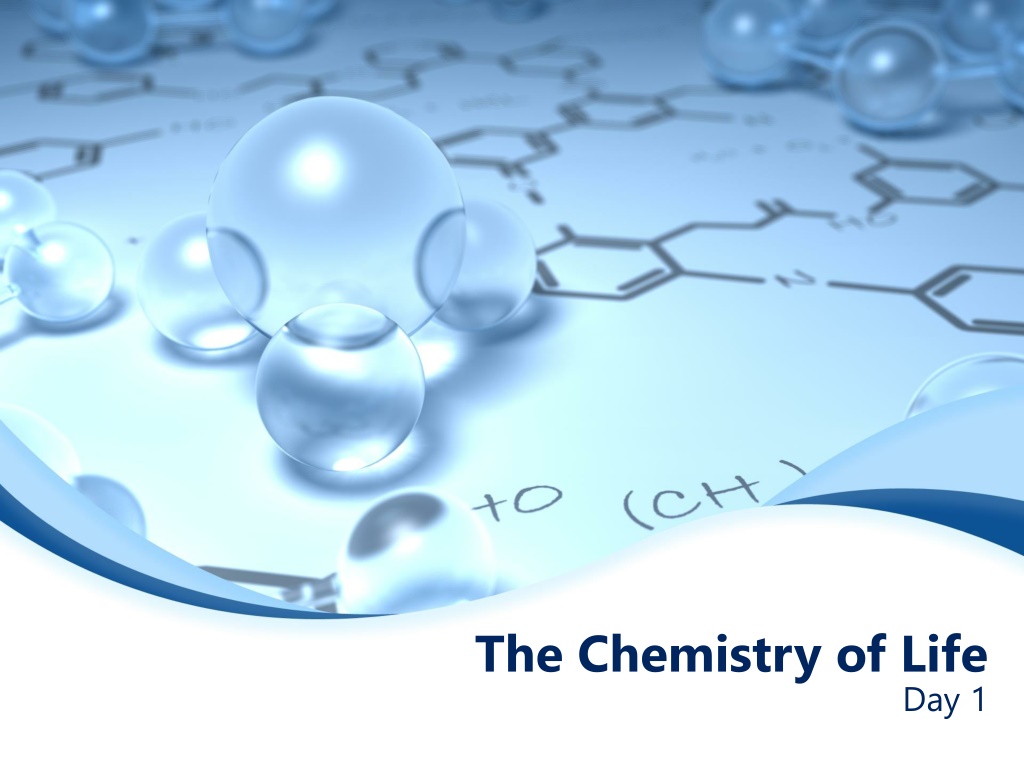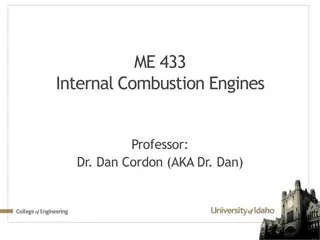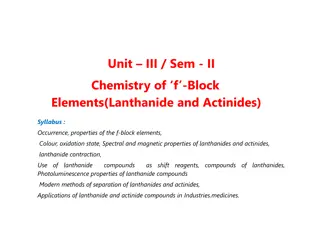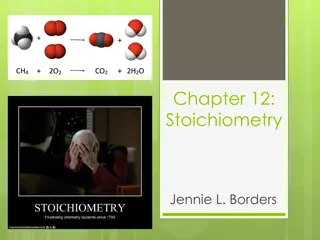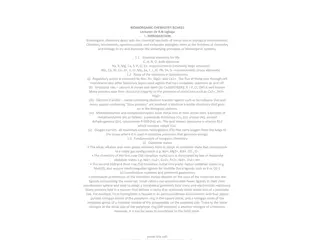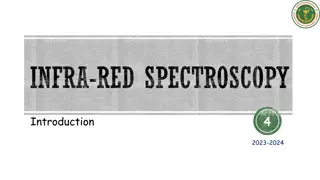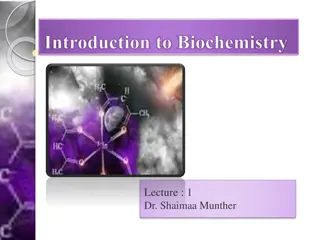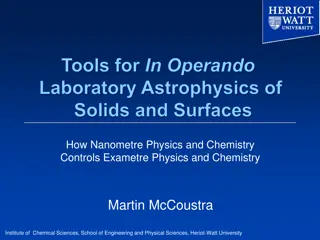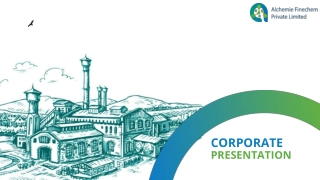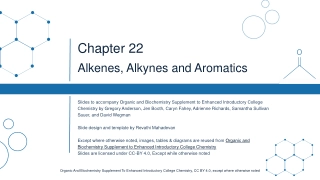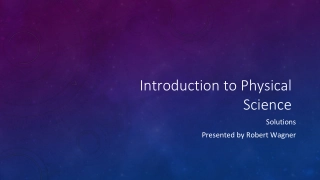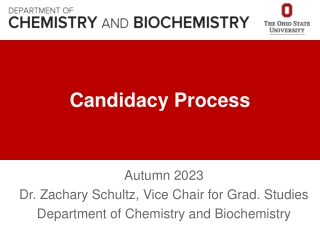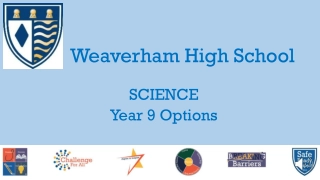The Chemistry of Life
Biochemistry, the study of structure and chemical reactions in living organisms, plays a crucial role in understanding life processes. Matter, composed of atoms and elements, forms the basis of everything in the universe. Dive into the world of atoms, elements, compounds, and more to unravel the intricate relationship between biology and chemistry.
Download Presentation
Please find below an Image/Link to download the presentation.
The content on the website is provided AS IS for your information and personal use only. It may not be sold, licensed, or shared on other websites without obtaining consent from the author. Download presentation by click this link. If you encounter any issues during the download, it is possible that the publisher has removed the file from their server.
Presentation Transcript
The Chemistry of Life Day 1
What is biochemistry? Biochemistry is the study of structure, composition (what things are made up of), and chemical reactions that occur in living things. Living things (biotic factors) depend on chemistry for life so biology and chemistry are closely related!
Composition of Matter Matter everything in the universe is composed of matter. Matter is anything that occupies space or has mass. Mass is the quantity of matter an object has. Weight is the pull of gravity on an object.
States of Matter States of Matter
Atoms The simplest particle of an element that retains all the properties of that element. All atoms consist of 3 types of smaller particles: Proton = has a + charge Neutron = has no charge Electron = has a - charge Properties of atoms determine the structure and properties of the matter they compose. Our understanding of the structure of atoms is based on scientific models, not actual observation.
The Nucleus Central core Consists of positive charged protons and neutral neutrons Positively charged Contains most of the mass of the atom
Elements Pure substances that cannot be broken down chemically into simpler kinds of matter. Made of only 1 type of atom A group of atoms of the same type. More than 100 elements (91 are naturally occurring)
More on Elements 96 % of the mass of an organism is composed of 4 elements (oxygen, carbon, hydrogen, and nitrogen) Each element has a unique chemical symbol: Consists of 1-2 letters First letter is always capitalized
Compounds Is a substance made of atoms of different elements bonded together in a certain ratio. Examples: H2O and CO2 Most elements do not exist by themselves Readily combine with other elements in a predictable fashion
More on Compounds A compound is a pure substance made up of atoms of two or more elements. The proportion of atoms are always fixed. Chemical formulas show the kind and proportion of atoms of each element that occurs in a particular compound.
Molecules Is two or more atoms held together by covalent bonds. Are the simplest part of a substance that retains all of the properties of the substance and exists in a free state. Some molecules are large and complex.
Ions form when atoms gain or lose electrons Ion is an atom that has gained or lost one or more electron. It forms because an atom is more stable when its outermost energy level is full. The gain or loss of electrons results in a full outermost level. An atom becomes an ion when its number of electrons change and it gains an electrical charge. Can be positively or negatively charged.
Ionic Bond Some atoms become stable by losing or gaining electrons. Atoms that lose electrons are called positive ions. Atoms that gain electrons are called negative ions. Because positive and negative electrical charges attract each other ionic bonds form.
Atoms share pairs of electrons in covalent bonds. Not all atoms gain or lose electrons easily. Some atoms share pairs of electrons. Shared pairs of electrons fill the outermost energy levels of the bonded atoms. A covalent bond is formed when atoms share a pair of electrons. This type of bond is very strong.
Properties of the Water Molecule Water molecule (H2O) is made up of three atoms one oxygen and two hydrogen The oxygen atom attracts more than its fair share of electrons. Oxygen end acts negative Hydrogen end acts positive Causes the water to be polar Think of it as two magnets attracted to one another. Water is neutral (equal number of electrons and protons) Zero net charge
Life depends on hydrogen bonds in water Polar water molecules act like magnets and attract each other Hydrogen bonds Is an attraction between a slightly positive hydrogen atom and a slightly negative atom, often oxygen or nitrogen. They are strong bonds that form between molecules like CO2 and H2O
Bonding Animation Bonding Relationships
Homeostasis Ability to maintain a steady state despite changing conditions Water is important to this process because: Makes a good insulator Resists temperature change Universal solvent Coolant Ice protects against temperature extremes (insulates frozen lakes)
Properties Related to Hydrogen Bonds High specific heat: Water resists changes in temperature. Must absorb more heat energy to increase temperature Helps regulate cell temperatures
Properties Related to Hydrogen Bonds Cohesion Attraction among molecules of the same substance Makes water molecules stick to each other Produces surface tension, makes kind of skin on water
Properties Related to Hydrogen Bonds Adhesion Attraction among molecules of different substances Water molecules stick to things Responsible for the upward curve on the surface of the water in a test tube Helps plants transport water from their roots to their leaves
Properties Related to Hydrogen Bonds Capillary action Allowing water to travel upwards against gravity
Solutions - Review Solutions Animation
BrainPop - Review BrainPop Acids and Bases
Ticket Out the Door 1. What is biochemistry? 2. What is matter? 3. List the charges for protons, neutrons, and electrons. 4. What is the difference between an element and a compound? 5. Describe the difference between ionic and covalent bonds. 6. On the pH scale where do acids AND bases fall?
The Chemistry of Life Day 2
What is a macromolecule? These are organic compounds that contain carbon, and are considered to be giant molecules . A process called polymerization combines smaller molecules together to form these larger macromolecules. These compounds are the building blocks of living things in other words without them there would be no you!
Examples of Macromolecules There are four groups of macromolecules that make up living things: Carbohydrates Lipids Proteins Nucleic acids
Six Major Elements associated with making up these macromolecules These 6 elements make up your body, and they are also important in creating these organic compounds. So what are these 6 major elements important to life: The Big Six -> CHONPS Carbon (C) Oxygen (O) Phosphorus (P) Hydrogen (H) Nitrogen (N) Sulfur (S)
So how are these the building blocks of living things? The macromolecules are the LARGER MOLECULES so like a house, you need bricks to build/make them! Monomer smallest unit of a large molecule (building blocks of things) Polymer the large molecule; formed by joining monomers (the product/the thing made = this is the macromolecule!) 2 or more monomers make a polymer!
Formation of Macromolecules Monomers are connected by a reaction in which 2 molecules are bonded to each other through the loss of a water molecule. Called a condensation reaction or dehydration reaction because a water molecule is lost.
Formation of Macromolecules cont. Polymers are disassembled (broken up) into monomers by hydrolysis, a process that is essentially the reverse of the dehydration reaction. Hydrolysis means to break with water . Bonds between monomers are broken by the addition of water molecules.
Four Major Classes of Organic Molecules 1. Carbohydrates Main source of energy for living things Plants and some animals use carbohydrates for structural purposes Made up of sugars Monosaccharide (monomer) = 1 single Disaccharide = 2 sugars Polysaccharide = many/more than 2 sugars
Organic Compounds: Carbohydrates The elements that make them up C, H, & O Glycosidic bonds attach the sugar monomers together 3 types (1) Monosaccharides (C6H12O6 = glucose, galactose, & fructose) (2) Disaccharides (2 monosaccharides joined; ex: sucrose) (3) Polysaccharides (long chain of monosaccharides; ex: starch)
Glucose, Fructose, and Galactose (Monosaccharides) Glucose: Made during photosynthesis Main source of energy for plants and animals Fructose: Found naturally in fruits Is the sweetest of monosaccharides Galactose: Found in milk Is usually in association with glucose or fructose
Disaccharide Disaccharide two monosaccharide bonded together Table sugar (sucrose) = made up of glucose + fructose bonded together Milk sugar (lactose) = made up of glucose + galactose bonded together
Polysaccharide Polysaccharide = more than two monosaccharide bonded together by glycosidic bonds Serve as storage material or building material Storage (examples: starch, glycogen) Structural (examples: cellulose, chitin) A complex carbohydrate is a polysaccharide with 12 or more monosaccharide units. Pasta and starches are polysaccharides Potatoes are a starch
Carbohydrate Animation Carbohydrate Animation
4 Classes of Organic Cmpds contd Lipids 2. Used to store energy (for the long term) Important in making your cell membranes & waterproofing the certain coverings in the body Example: Cell Membranes Insulates/ protects your bodies organs (like a cushion) Examples Fats, Oils, and Waxes
Organic Compounds: Lipids The elements that make them up C, H, & O Nonpolar (NOT soluble / will not mix with water - Hydrophobic) The building block for lipids includes 1 glycerol molecule and 3 fatty acid molecules. There two ways lipids can be represented in the body: Saturated Fat fatty acids are full of Hydrogens; all carbon bonds are single (animal products) Unsaturated Fat at least 1 double bond between carbons (plant products)
At room temperature, the molecules of an unsaturated fat cannot pack together closely enough to solidify because of the kinks in their fatty acid tails. At room temperature, the molecules of a saturated fat are packed closely together, forming a solid.
Ticket Out the Door 1. What is a macromolecule? 2. List the 4 major groups of macromolecules. 3. What are the 6 major groups of elements found in macromolecules? 4. What is the difference between a monomer and a polymer? 5. What are carbohydrates used for? 6. What lipids used for? 7. What is the difference between a saturated and unsaturated fat?
The Chemistry of Life Day 3
More on the 4 Classes of Organic Compounds 3. Proteins The majority of the processes that take place in the body occur because of proteins!!! The elements that make up proteins are C, H, O, & N Amino Acids (aa) are the monomers of proteins
Organic Compounds: Proteins There are 20 different amino acids found in nature Amino Acids are made up of 3 functional groups: An AMINO GROUP (-NH2) An R GROUP (different per amino acid) A CARBOXYL GROUP (-COOH)
What are some functions of proteins? 4 Types of Proteins & their function in the body: Regulatory (ex: Enzymes) Controls the rate of reactions in your body Transport (ex: Hemoglobin transports O2) Sending nutrients to different parts of the body Structural (ex: collagen, found in skin and bones) Forms/ makes up different parts of the body Protective (ex: antibodies protect against disease) Makes cells that act as fighters for the body
Finally Nucleic Acids 4. DNA The function of nucleic acids is to store and transmit genetic info The elements that make up nucleic acids are C, H, O, N, & P Two types: 1. DNA (Deoxyribonucleic Acid) 2. RNA (Ribonucleic Acid)
Organic Compounds: Nucleic Acids The monomers of nucleic acids are nucleotides Each nucleotide is made up of: A 5-carbon sugar A phosphate group A nitrogenous base
Monomer + Monomer, etc. = Polymer MONOMERS (or building blocks) Monosaccharides POLYMERS Carbohydrates (polysaccharides) Lipids Glycerol and fatty acids (building block) Nucleotides Nucleic Acids Amino Acids Proteins
Carbon Macromolecules Compounds include Carbohydrates Lipids Nucleicacids Proteins that consist of that consist of that consist of that consist of Sugars and starches Fats and oils Nucleotides Amino Acids which contain which contain which contain which contain Carbon, hydrogen, oxygen Carbon, hydrogen, oxygen Carbon, Carbon,hydrogen, oxygen, nitrogen, phosphorus hydrogen,oxygen, nitrogen,
